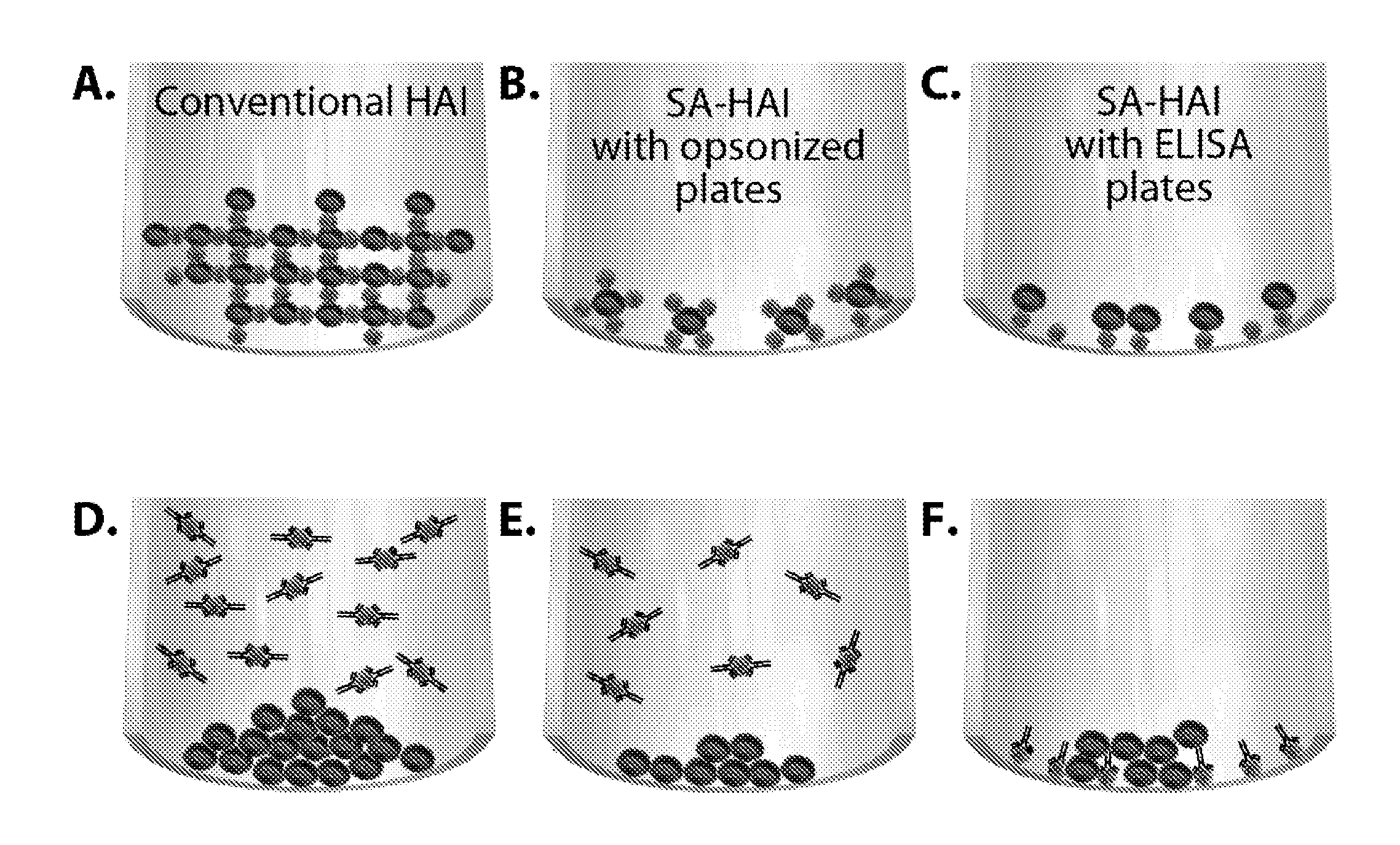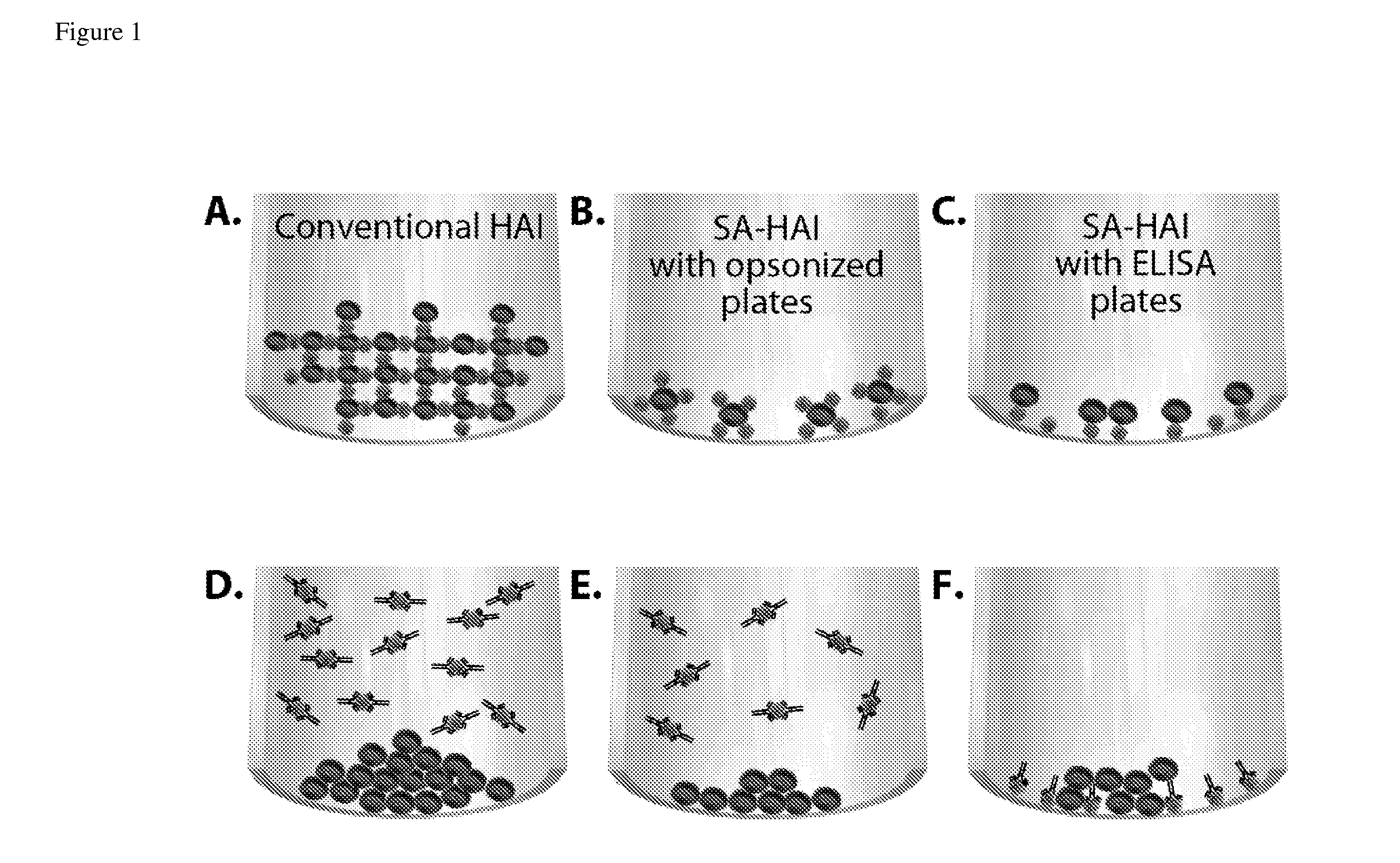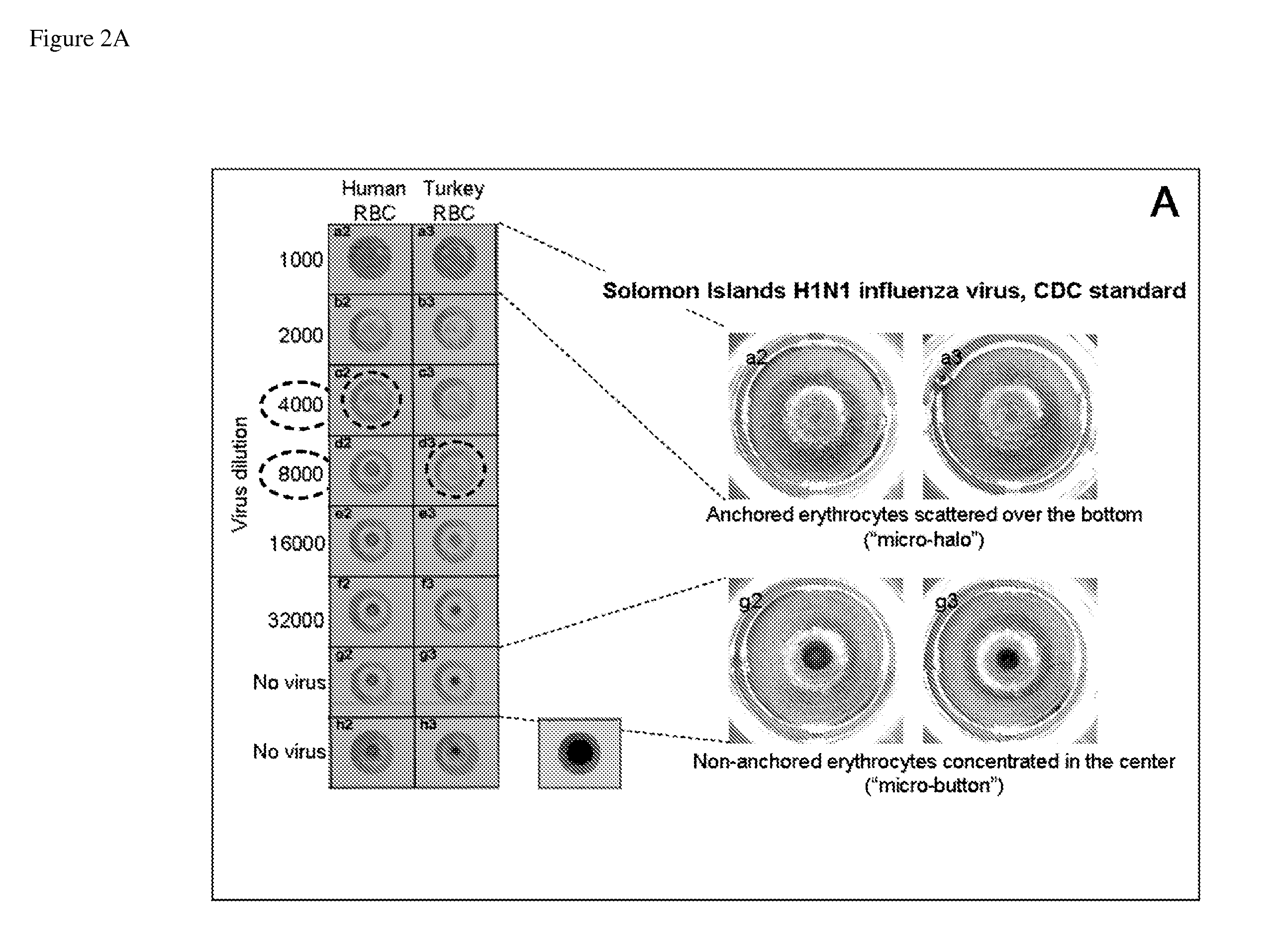Surface-assisted hemagglutination and hemagglutination inhibition assays
a technology of hemagglutination and inhibition assays, which is applied in the field of surface-assisted hemagglutination and hemagglutination inhibition assays, can solve the problems of limited sensitivity of hai data towards some viruses, achieve enhanced sensitivity, lack precision, and reduce the effect of variability in hai data
- Summary
- Abstract
- Description
- Claims
- Application Information
AI Technical Summary
Benefits of technology
Problems solved by technology
Method used
Image
Examples
example 1
SA-HA / HAI Method Using Opsonized Plates
[0095]Protocol of the SA-HA / HAI using opsonized U-shaped 96-well plates (U-bottom 96-well format plate, clear polystyrene, Corning # 3795).
Processing of Erythrocytes
[0096]Types of erythrocytes used in the SA-HA / HAI experiments were: human group O, turkey, chicken, guinea pig, horse. Human erythrocytes were acquired from Florida Blood Bank or via internal blood donations at Vaxdesign Corp. Turkey, chicken, guinea pig and horse erythrocytes were purchased from Rockland Immunochemicals as suspensions in citrate buffer.
Aliquotting and Storage
[0097]The erythrocytes were aliquotted immediately after receiving by 1.0 mL in microfuge vials and stored at 4° C. until further use. The normal storage time was no longer than 3 weeks for human, turkey, horse and chicken erythrocytes, and no longer than 1 week for guinea pig erythrocytes.
Washing and Re-Suspending
[0098]a. The vial containing the erythrocytes was centrifuged (600 g, 2 min).
[0099]b. The supe...
example 2
SA-HA / HAI Method Using ELISA Plates
[0140]Protocol of the SA-HA / HAI assays using ELISA U-shaped 96-well plates (Immulux HB from Dynex, catalog # 1011 or ImmunoGrade BRANDPlates from BrandTech Scientific, catalog #781724).
Processing of Erythrocytes
[0141]As described above, in Example 1.
Processing of the Viruses
[0142]The processing was similar to the described above in the Example 1 for the SA-HA / HAI assays with opsonized plates, except that the final solvent used for viruses before application to the plates was BSA / NaN3 saline.
Typical SA-HA Experiment Using ELISA Plates
[0143]For most SA-HA experiments, the plate layout was horizontal (i.e., the placement and serial dilution of the samples performed from left to right).
Pre-Filling with Saline
[0144]All the wells were filled with PBS / NaN3, 50 μL per well.
Filling with Virus
[0145]The filling and serial dilution techniques and the typical layouts were similar to that described above in the Example 1, the protocol for SA-HA / HAI using ops...
example 3
Classical HA / HAI Assay
[0167]The protocol for the classical HA / HAI assays were versions of the HA / HAI protocols updated by Hierholzer et al. (1969) Applied Microbiol. 18, 824-833. A few details of the assay are important:
[0168]The major solvent used for dilution of virus samples, sera, antibody samples and erythrocytes was PBS / NaN3 saline.
[0169]The protocols for processing of erythrocytes and viruses remained the same as described above, except that only PBS / NaN3 saline was used as a solvent or diluent in all cases and on all stages of the procedures.
[0170]The classical HA and HAI assays were performed in two functionally equivalent modes: Full Volume Mode and Low Volume Mode, which used 30-50-μL filling aliquots in the U-bottom plates and 7-μL filling aliquots in the V-bottom plates, respectively. Both modes gave equivalent results concerning HAI titers for the tested sera (FIG. 8). Low Volume Mode was developed to allow comparative experiments with scarce virus and sera samples.
[0...
PUM
| Property | Measurement | Unit |
|---|---|---|
| volume | aaaaa | aaaaa |
| volume | aaaaa | aaaaa |
| volume | aaaaa | aaaaa |
Abstract
Description
Claims
Application Information
 Login to View More
Login to View More - R&D
- Intellectual Property
- Life Sciences
- Materials
- Tech Scout
- Unparalleled Data Quality
- Higher Quality Content
- 60% Fewer Hallucinations
Browse by: Latest US Patents, China's latest patents, Technical Efficacy Thesaurus, Application Domain, Technology Topic, Popular Technical Reports.
© 2025 PatSnap. All rights reserved.Legal|Privacy policy|Modern Slavery Act Transparency Statement|Sitemap|About US| Contact US: help@patsnap.com



